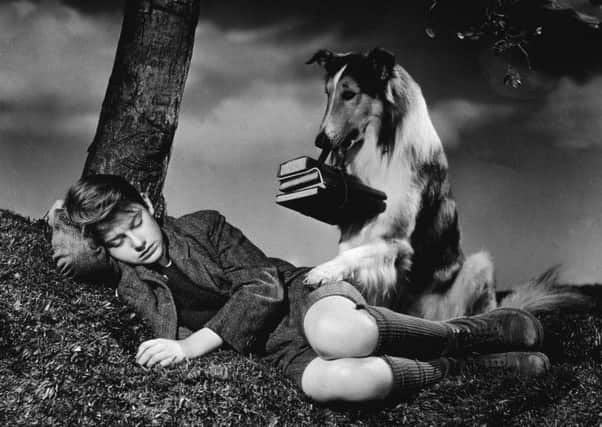Films breed puppy love for movie star dogs


The 1943 blockbuster Lassie Come Home triggered a 40 per cent increase of collie registrations over the following two years.
An even more dramatic example was the 100-fold increase in old English sheepdog registrations following the 1959 Disney movie The Shaggy Dog.
Advertisement
Hide AdAdvertisement
Hide AdHowever, the research also showed that the trend can be bad news for the dogs – with the most popular breeds having the greatest number of inherited disorders.
Cinema’s influence on the popularity of dog breeds was strongest in the early 20th century and has declined.
The study, published in the journal PLOS ONE, involved researchers from Bristol University, the City University of New York and Western Carolina University.
They used figures from the American Kennel Club, which maintains the world’s largest dog registry of more than 65 million dogs, and analysed 87 movies featuring dogs. The researchers found that the release of movies is often associated with an increase in popularity of featured breeds over periods of one, two, five, and ten years.
The ten films with the strongest ten-year effect were associated with changes in registration trends to the extent that over 800,000 more dogs were registered in the decade after the movies’ release than would have been expected from pre-release trends.
Study lead author Professor Stefano Ghirlanda said: “We focused on changes in trend popularity rather than on popularity itself to avoid attributing to movies trends that were already ongoing before release.”
The team also discovered a general decrease, during the century, of movies’ influence on the success of dog breeds.
Earlier films are associated with generally larger trend changes than later movies. The researchers said this might be due to an increased competition with other media, such as television, and more recently the internet, but also to greater competition in the film industry.
Advertisement
Hide AdAdvertisement
Hide AdMovies featuring dogs were released at a rate of less than one per year until about 1940, but a rate of more than seven per year by 2005.
The researchers had previously shown how dynamics in dog- breed popularity are subject to the “erratic fluctuations” typical of fashion and fads. For example, they discovered that the more rapidly puppy registrations increased, the more rapidly their popularity declined, a phenomena also found for the popularity of baby names.
The researchers also found that popularity of breeds is unrelated to breed temperament and health.
Hal Herzog, co-author of the paper, said: “On the whole, breeds with more desirable behaviours, greater longevity and fewer inherited genetic disorders did not become more popular than other breeds.
“In short, cultural shifts in types of pets largely reflect ephemeral changes in fashion rather than selection for functional traits.”
Co-author Dr Alberto Acerbi, of Bristol University, added that popularity could have a negative effect.
He said: “Our previous study found that the most popular breeds had the greatest number of inherited disorders.”